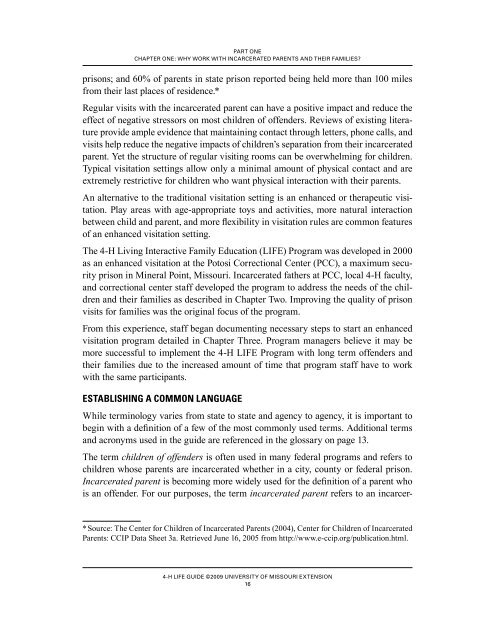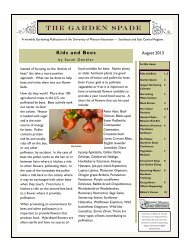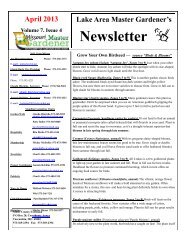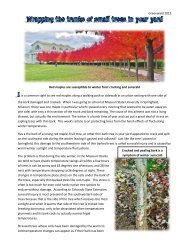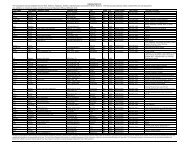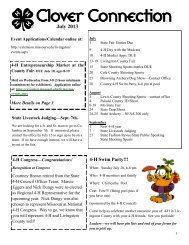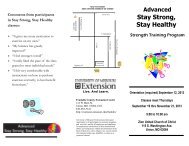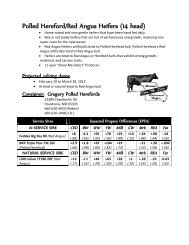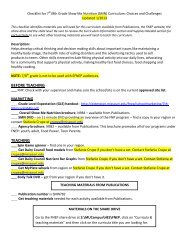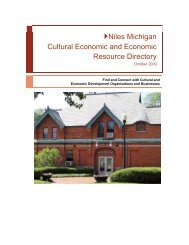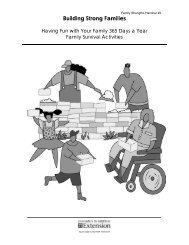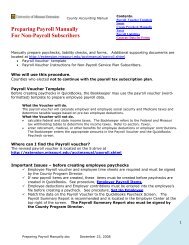A Program for Children with Incarcerated Family Members (PDF)
A Program for Children with Incarcerated Family Members (PDF)
A Program for Children with Incarcerated Family Members (PDF)
You also want an ePaper? Increase the reach of your titles
YUMPU automatically turns print PDFs into web optimized ePapers that Google loves.
PART ONE<br />
CHAPTER ONE: WHY WORK WITH INCARCERATED PARENTS AND THEIR FAMILIES?<br />
prisons; and 60% of parents in state prison reported being held more than 100 miles<br />
from their last places of residence.*<br />
Regular visits <strong>with</strong> the incarcerated parent can have a positive impact and reduce the<br />
effect of negative stressors on most children of offenders. Reviews of existing literature<br />
provide ample evidence that maintaining contact through letters, phone calls, and<br />
visits help reduce the negative impacts of children’s separation from their incarcerated<br />
parent. Yet the structure of regular visiting rooms can be overwhelming <strong>for</strong> children.<br />
Typical visitation settings allow only a minimal amount of physical contact and are<br />
extremely restrictive <strong>for</strong> children who want physical interaction <strong>with</strong> their parents.<br />
An alternative to the traditional visitation setting is an enhanced or therapeutic visitation.<br />
Play areas <strong>with</strong> age-appropriate toys and activities, more natural interaction<br />
between child and parent, and more flexibility in visitation rules are common features<br />
of an enhanced visitation setting.<br />
The 4-H Living Interactive <strong>Family</strong> Education (LIFE) <strong>Program</strong> was developed in 2000<br />
as an enhanced visitation at the Potosi Correctional Center (PCC), a maximum security<br />
prison in Mineral Point, Missouri. <strong>Incarcerated</strong> fathers at PCC, local 4-H faculty,<br />
and correctional center staff developed the program to address the needs of the children<br />
and their families as described in Chapter Two. Improving the quality of prison<br />
visits <strong>for</strong> families was the original focus of the program.<br />
From this experience, staff began documenting necessary steps to start an enhanced<br />
visitation program detailed in Chapter Three. <strong>Program</strong> managers believe it may be<br />
more successful to implement the 4-H LIFE <strong>Program</strong> <strong>with</strong> long term offenders and<br />
their families due to the increased amount of time that program staff have to work<br />
<strong>with</strong> the same participants.<br />
estabLIsHInG a CoMMon LanGuaGe<br />
While terminology varies from state to state and agency to agency, it is important to<br />
begin <strong>with</strong> a definition of a few of the most commonly used terms. Additional terms<br />
and acronyms used in the guide are referenced in the glossary on page 13.<br />
The term children of offenders is often used in many federal programs and refers to<br />
children whose parents are incarcerated whether in a city, county or federal prison.<br />
<strong>Incarcerated</strong> parent is becoming more widely used <strong>for</strong> the definition of a parent who<br />
is an offender. For our purposes, the term incarcerated parent refers to an incarcer-<br />
* Source: The Center <strong>for</strong> <strong>Children</strong> of <strong>Incarcerated</strong> Parents (2004), Center <strong>for</strong> <strong>Children</strong> of <strong>Incarcerated</strong><br />
Parents: CCIP Data Sheet 3a. Retrieved June 16, 2005 from http://www.e-ccip.org/publication.html.<br />
4-H LIFE GUIDE ©2009 UNIVERSITY OF MISSOURI EXTENSION<br />
16


